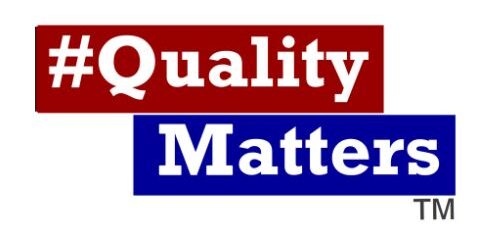Podcast: Play in new window | Download (Duration: 14:52 — 13.6MB) | Embed
Subscribe: Apple Podcasts | Spotify | TuneIn | RSS | More
In the latest mini-episode of Caleb’s Corner, we dove into a crucial topic every quality professional faces: When do you keep tweaking your system, and when is it time for a total overhaul? This fundamental concept, often described as Iterative Design vs. Radical Redesign, isn’t just for software developers; it’s highly applicable across all areas of Quality Management Systems (QMS).
The Heart of Iterative Design
As the Quality Software Manager at Texas Quality Assurance (TQA), much of my work revolves around our TQA Cloud platform, which helps clients manage everything from calibration and maintenance to employee training and document control. In developing the next version of our app—which will offer a smoother, more integrated experience—I face constant decisions on whether to improve existing features incrementally or scrap and rebuild entire modules.
Iterative Design is the practice of making small, controlled adjustments to improve a system continuously. This approach:
- Allows for measurable, incremental improvements
- Provides lower risk since changes are smaller and easier to reverse
- Helps maintain system stability while adapting to new requirements
- Encourages continuous improvement, a core principle of ISO 9001 and other quality standards
In many cases, iterative design is the safest and most effective way to evolve a QMS software platform or any quality management process.
The Necessity of Radical Redesign
However, there are times when no amount of tweaking will get you where you need to be. This is where Radical Redesign becomes necessary. Sometimes, your approach is fundamentally flawed for the goals you’re trying to achieve. Signs it’s time for a full rebuild include:
- Legacy systems that cannot integrate with modern tools
- Process flows that no longer reflect your organization’s actual operations
- Compliance gaps that cannot be closed with minor adjustments
- User frustration due to convoluted or outdated interfaces
In these cases, starting fresh allows you to rethink your processes, design for today’s needs, and set a stronger foundation for future growth.
Balancing the Two in Quality Management
In the world of quality management consulting, we frequently help clients evaluate their systems through this very lens. Whether we’re advising on ISO 9001 compliance, API Q1 certification, or customizing TQA Cloud for a new client, the same question applies: Is this a tweak or a rebuild?
By regularly assessing your QMS and leveraging both iterative design and radical redesign when appropriate, you can ensure your systems are not only compliant but also practical, scalable, and truly supportive of your business objectives.
Let Texas Quality Assurance Help You Decide
Struggling to determine whether your quality system needs a few small adjustments or a complete redesign? Texas Quality Assurance can help. With decades of experience in quality management systems, compliance, and software solutions, we guide companies just like yours through these critical decisions every day.
#QualityMatters, #CalebsCorner, #QualityManagement, #QMS, #ISO9001, #APIQ1, #ContinuousImprovement, #IterativeDesign, #RadicalRedesign, #TexasQualityAssurance, #TQACloud
Call us today at (281) 756-7316 or email info@texasqa.com to schedule a consultation.
